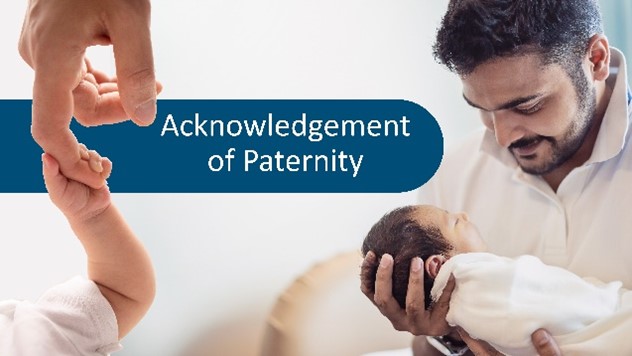An Acknowledgment of Paternity (AOP) is a legal document that allows parents who aren't married to establish legal paternity.
Who can complete an Acknowledgment of Paternity (AOP)?
Biological parents who want to establish their child’s legal rights to his or her father can voluntarily establish paternity with an Acknowledgment of Paternity (AOP). If you would like to know more, please view our informational video.

How to File an Acknowledgment of Paternity (AOP)
To complete and file an AOP, both parents must work with an AOP-certified entity. AOP-certified entities have been trained by the Office of the Attorney General to help parents voluntarily establish paternity.
If you need assistance completing an AOP — or if the other parent is in the military, incarcerated, or living in a different city or state submit your request online, or call the AOP Hotline.
AOP Hotline
(866) 255-2006
Find an AOP certified entity near you.
Important: Minors can sign the AOP without parental consent.
Common AOP Questions
When filling out the AOP with your AOP-certified entity, several common situations may come up. Click on the topic below to learn more.
What Does "Presumed Father" Mean?
A presumed father is a man to whom the mother is currently married, a man to whom the mother was married to and the marriage ended within 300 days prior to the child's birth or a man who continuously lived with the child and represented himself as the child's father the first two years of the child's life.
The Mother Is Married to a Person Who Is Not the Biological Father
In this case, the "Denial of Paternity" section of the AOP must be completed by the mother and her spouse (presumed father) before paternity can be established.
What If I Cannot Complete the AOP at the Same Time as the Other Parent
Tell your AOP-certified entity. There are special steps that can be taken so that parents complete the AOP at separate times, dates or locations.
What If I Change My Mind About the AOP Later?
Anyone who signs the AOP may file a "Rescission of the Acknowledgment of Paternity" form (VS-158) to rescind the AOP. The form must be filed within the first 60 days after the AOP has been filed with the Vital Statistics Unit (VSU) or before a legal proceeding related to the child is initiated, whichever comes first.
After that, a person may challenge the AOP in court under certain situations. Parents must read the AOP carefully before signing it. The AOP is a legal document.
